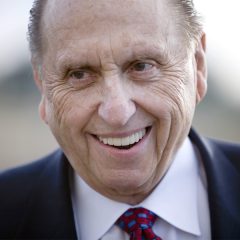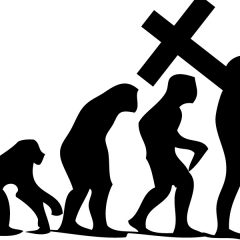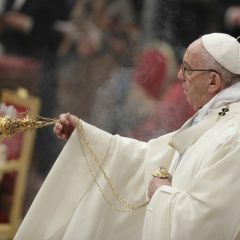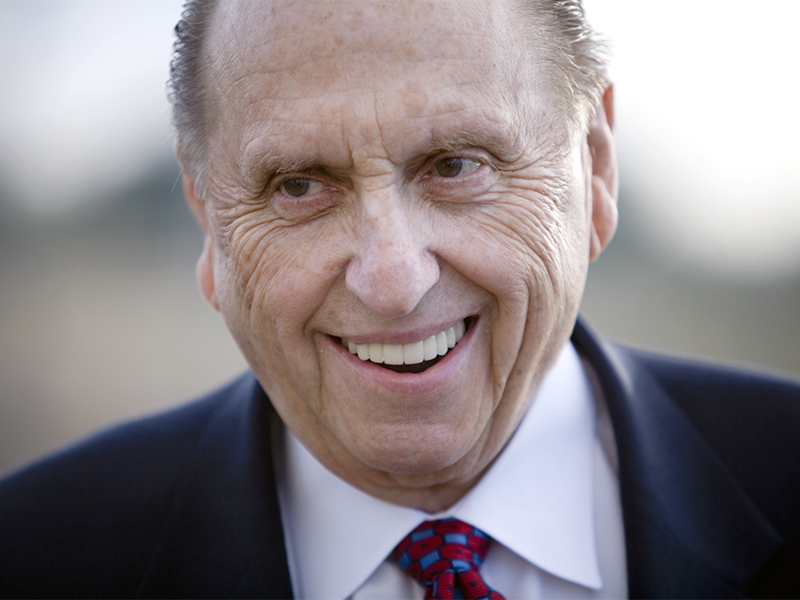[slingshot_ad name=”Slingshot Banner Ad”]
Thomas S. Monson, president of the Church of Jesus Christ of Latter Day Saints, died Tuesday, Jan. 2, 2018. Photo courtesy of Creative Commons/Brian Tibbets
Need to know: Wednesday, January 3, 2018

Thomas S. Monson, 90, LDS church president since 2008, dies
He served in leadership roles for half a century for the world’s 16 million Mormons.
Michele Bachmann tells televangelist she might run for Al Franken’s Senate seat
A conservative in faith and politics, Bachmann fears attacks from a “toxic swamp” because she stands on “biblical principles.”
Roy Moore’s ‘Jewish lawyer’ voted for Doug Jones, raised money for his campaign
Moore’s wife cited the lawyer to fend off charges of anti-Semitism after the candidate suggested Jews who don’t accept Christ go to hell.

Largest group of Mennonite churches leaves denomination
Disagreement over the definition of marriage and the question of homosexuality and the church splits another Protestant group.

Evangelicals’ surprising view of science and what it may mean
Two researchers say religious Americans may be flexible about scientific creation narratives – if they see space for God’s role.
[slingshot_ad name=”Slingshot Middle Cube Ad”]
Latest news from RNS

Religion historian Jonathan Z. Smith dies
(RNS) — Smith raised fundamental questions about the nature of religion and the challenges of comparing it across cultures.

Pope on 2018: Forget life’s ‘useless baggage’
Pope Francis recommended jettisoning “empty chatter” and banal consumerism, and focusing instead on building a peaceful world.

Pakistan man exonerated after serving 9 years for blasphemy
(AP) Blasphemy laws are a life-or-death issue in Pakistan's conservative society, with harsh prison sentences or execution for lawbreakers.
More views from RNS

Looking back with lament, and forward with hope
(RNS) — At present many of the most hopeful occurrences of 2017 are likely hidden from our view.

When Moses had a #MeToo moment
(RNS) — This year was saw the Tiananmen Square of Testosterone. Moses saw it coming.

Sexuality, race, and gender: 3 explosive insights about America’s 100 largest churches
Last October, evangelicalism was rocked by the launch of ChurchClarity.org, an organization that reports churches' LGBTQ+ policies and rates congregations based on their level of clarity. The website angered Christians on both sides of the issue. Some conservatives attacked the CC's liberal leadership, while some progressives claimed that labeling churches undermined progress.
Nevertheless, Church Clarity persisted.
Over the past two months, CC published scores for 500 congregations and have 700 more in the pipeline. But today, they announced their most significant accomplishment to date: a detailed analysis of America's 100 largest churches. Using Outreach Magazine's popular annual list, CC's staff uncovered three explosive insights about America's mega-churches.
READ MORE: "Church Clarity pressures pastors and churches to disclose views on homosexuality"
1. None of America's 100 largest churches are LGBTQ-affirming.
While progressive Christians often claim that same-sex issues have largely been settled, America's mega-churches have apparently not received the memo. None of them have policies affirming same-sex people and relationships. This staggering statistic will doubtlessly provide firepower to conservative Christians who claim that LGBTQ+ affirmation is a slippery slope to liberalism and a congregation killer.
And yet the data also provides progressives a counterargument. According to CC's analysis, a paltry 35% of these mega-churches have clear LGBTQ+ policies, and 54% actually hide their positions (e.g. sermons and blogposts) deep inside their websites. This seems to indicate that many non-affirming mega-churches are not as boldly opposed as one might assume, and some of these large congregations may be currently reconsidering their positions and policies.
2. 93% of America's 100 largest churches are led by a white pastor.
Only 7 out of 100 of the churches on Outreach's list are led by a person of color. For context, people of color comprise nearly 40% of the American population. So despite the Christian calls to diversity, equality, and justice, America's mega-churches are still lagging in the race department. These churches may preach a Gospel of inclusion, but they disproportionately prefer white men for their top leadership positions.
3. Only 1 of America's 100 largest churches has a female pastor.
Female pastors are on the rise in America, but not so for the largest mega-churches. Only 1 of the 100 largest churches on Outreach's list cites a female pastor. Faith Church in West Palm Beach, Florida holds this honor, yet even that congregation lists Nicole Crank as a co-pastor alongside her husband, David.
Given that 8% of Fortune 100 companies are led by women CEOs, one might say that secular companies are more gender-inclusive than spiritual communities in America. In October of 2018, Heather Larson will join the list as she assumes the role of lead pastor at Willow Creek Community Church outside of Chicago. Even still, this statistic is surely deflating for those Christians who advocate for women in church leadership.  The Outreach Magazine list is conducted in coordination with LifeWay Research, the public polling arm of the Southern Baptist Convention. Since congregations must disclose their numbers in order to be list, it is not fully comprehensive. However, the listed churches still represent more than 1.1 million American Christians.
With the New Year looming, Church Clarity's leaders claim that their analysis arrives not a moment too soon.
"Part of the reason we chose to release this now is because the New Year is a time when people decide to reengage with religion by attending church," said Church Clarity's co-founder Tim Schraeder. "As people of faith commit to new resolutions, we wanted to set them up for success by helping them make the most informed decision."
Church Clarity's leaders added that their decision to analyze race and gender in addition to sexuality also hints at the organization's expanding mission. In the future, they plan to also report on race and gender inclusion among church leadership. So this is not the first time Church Clarity has created a stir, and neither will it be the last.
View Church Clarity's full report for more information and analysis.
The Outreach Magazine list is conducted in coordination with LifeWay Research, the public polling arm of the Southern Baptist Convention. Since congregations must disclose their numbers in order to be list, it is not fully comprehensive. However, the listed churches still represent more than 1.1 million American Christians.
With the New Year looming, Church Clarity's leaders claim that their analysis arrives not a moment too soon.
"Part of the reason we chose to release this now is because the New Year is a time when people decide to reengage with religion by attending church," said Church Clarity's co-founder Tim Schraeder. "As people of faith commit to new resolutions, we wanted to set them up for success by helping them make the most informed decision."
Church Clarity's leaders added that their decision to analyze race and gender in addition to sexuality also hints at the organization's expanding mission. In the future, they plan to also report on race and gender inclusion among church leadership. So this is not the first time Church Clarity has created a stir, and neither will it be the last.
View Church Clarity's full report for more information and analysis.
 The Outreach Magazine list is conducted in coordination with LifeWay Research, the public polling arm of the Southern Baptist Convention. Since congregations must disclose their numbers in order to be list, it is not fully comprehensive. However, the listed churches still represent more than 1.1 million American Christians.
With the New Year looming, Church Clarity's leaders claim that their analysis arrives not a moment too soon.
"Part of the reason we chose to release this now is because the New Year is a time when people decide to reengage with religion by attending church," said Church Clarity's co-founder Tim Schraeder. "As people of faith commit to new resolutions, we wanted to set them up for success by helping them make the most informed decision."
Church Clarity's leaders added that their decision to analyze race and gender in addition to sexuality also hints at the organization's expanding mission. In the future, they plan to also report on race and gender inclusion among church leadership. So this is not the first time Church Clarity has created a stir, and neither will it be the last.
View Church Clarity's full report for more information and analysis.
The Outreach Magazine list is conducted in coordination with LifeWay Research, the public polling arm of the Southern Baptist Convention. Since congregations must disclose their numbers in order to be list, it is not fully comprehensive. However, the listed churches still represent more than 1.1 million American Christians.
With the New Year looming, Church Clarity's leaders claim that their analysis arrives not a moment too soon.
"Part of the reason we chose to release this now is because the New Year is a time when people decide to reengage with religion by attending church," said Church Clarity's co-founder Tim Schraeder. "As people of faith commit to new resolutions, we wanted to set them up for success by helping them make the most informed decision."
Church Clarity's leaders added that their decision to analyze race and gender in addition to sexuality also hints at the organization's expanding mission. In the future, they plan to also report on race and gender inclusion among church leadership. So this is not the first time Church Clarity has created a stir, and neither will it be the last.
View Church Clarity's full report for more information and analysis.




